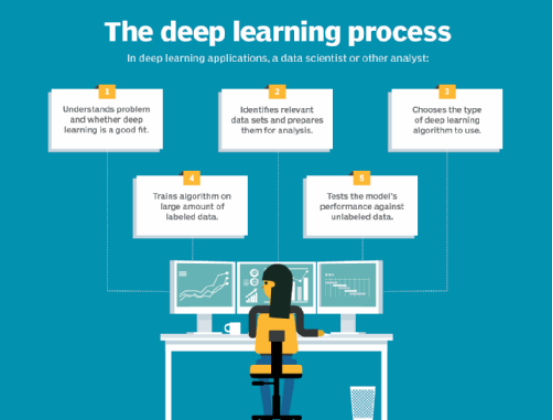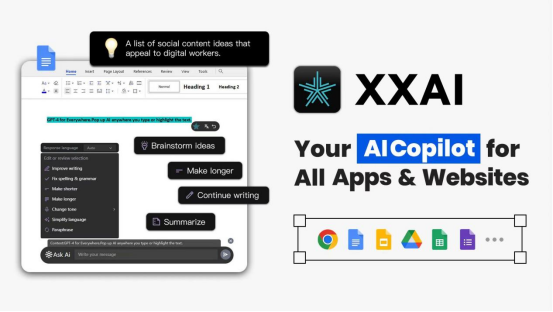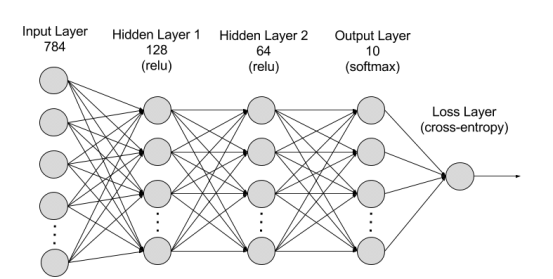What is the problem with deep learning in artificial intelligence (AI)

Humans learn knowledge from experience. The more experience one has, the more knowledge one can acquire. In the field of deep learning within artificial intelligence (AI), this principle also applies; machines, powered by AI software and hardware, learn from experience. These experiences, from which machines learn, are determined by data collected by the machines, and the quantity and quality of the data determine the amount of knowledge the machines can acquire.
What is Deep Learning?
Deep learning is a machine learning method that uses multi-layered neural networks (deep neural networks) for data processing and pattern recognition. The inspiration for deep learning comes from the structure and function of the human brain, processing complex data by simulating neurons and their connections. You can use deep learning methods to automatically perform tasks that usually require AI, such as describing images or transcribing audio files to text.

Main Characteristics of Deep Learning
- Multi-layer Structure: Deep learning models generally contain multiple hidden layers that can automatically extract and learn different levels of features from data. Common deep learning models include Convolutional Neural Networks (CNN), Recurrent Neural Networks (RNN), and Generative Adversarial Networks (GAN).
- Self-supervised Learning Capability: Deep learning models are trained using large amounts of labeled data and can automatically learn features from the data, reducing the need for manual feature engineering.
- Efficiency: Thanks to modern GPU and distributed computing technologies, deep learning can efficiently process large amounts of data and perform complex calculations.
- Wide Application: Deep learning has shown excellent performance in many fields, including image and speech recognition, natural language processing (NLP), medical research, and autonomous driving. Due to its powerful capabilities and broad application prospects, deep learning has become an important research direction in AI and machine learning.
Importance of Deep Learning
Deep learning plays a crucial role not only in many daily applications but also occupies a significant position in emerging technologies. For example, technologies like digital assistants, voice-controlled TV remotes, and automatic face recognition are all based on developments in deep learning. Furthermore, deep learning is an essential component of cutting-edge technologies such as self-driving cars and virtual reality. Deep learning models are essentially computer files that data scientists train using algorithms or a set of predefined steps to perform tasks. Companies use deep learning models to analyze data and make predictions across various applications.
Diverse Applications of Deep Learning
Deep learning is applied in multiple fields, such as automotive, aerospace, electronics, and medical research. Below are some specific examples:
Computer Vision
Computer vision is the ability of computers to extract information and insights from images and videos. Computers can use deep learning techniques to understand images just like humans. Computer vision has various applications such as:
- Content moderation: Automatically removing unsafe or inappropriate content from image and video archives.
- Face recognition: Identifying faces and multiple attributes, such as open eyes, glasses, and facial hair.
- Image classification: Identifying brand logos, clothing, safety gear, and other image details.
Speech Recognition
Deep learning models can analyze human speech, despite different speaking patterns, tones, accents, and languages. Virtual assistants (like Amazon Alexa) and automatic transcription software use speech recognition to perform tasks such as:
- Helping call center agents and automatically categorizing calls.
- Converting clinical dialogues into documents in real-time.
- Adding accurate subtitles to videos and meeting records for broader content coverage.
Natural Language Processing (NLP)
Natural language processing uses deep learning algorithms to parse and understand text data. XXAI is an AI software for PC powered by 13 popular models including ChatGPT, Claude, Gemini, Perplexity, and DALLE-3, which can enhance writing, communication, and productivity. Here are some examples of its applications in NLP:
- Text Data Processing and Analysis: XXAI uses advanced models to process and analyze natural language data with high precision.
- Chatbots and Automatic Summaries: XXAI can be integrated into various applications, providing intelligent chat and document automatic summary functions.
- Case Analysis: Applications equipped with XXAI can significantly improve work efficiency and productivity for enterprises and individual users.

Automotive Driving and Safety
Self-driving cars use deep learning models to detect road signs, pedestrians, and other obstacles, achieving autonomous navigation. These models process information about the driving environment through multi-layer neural networks, ensuring the vehicle's safe driving under various conditions.
Security and Defense
In the defense sector, deep learning is used to analyze satellite images and automatically mark areas of interest. This allows defense systems to quickly and efficiently identify potential threats, enhancing national security.
Healthcare
Medical image analysis is a significant application of deep learning. By training deep learning models, doctors can quickly identify abnormal conditions like cancer cells, improving diagnostic accuracy and efficiency, thereby optimizing treatment plans.
Industry and Manufacturing
Deep learning has widespread applications in manufacturing. For example, factories can use deep learning models to automatically detect various abnormal conditions in machine operations, ensuring the safety and efficiency of the production process.
Recommendation Systems
Recommendation systems use deep learning to track user activities and develop personalized recommendations. By analyzing user behavior data, deep learning models can recommend new products or services to users, enhancing their experience. For instance, companies like Netflix and Fox use deep learning to provide personalized video recommendations.
Technical Basis of Deep Learning
Deep learning algorithms model neural networks after the human brain. The human brain contains millions of interconnected neurons that work together to learn and process information. Similarly, deep learning neural networks (or artificial neural networks) consist of multiple layers of artificial neurons working together within a computer. Artificial neurons are software modules called nodes that use mathematical calculations to process data. Artificial neural networks use these nodes to solve complex problems.

The core of deep learning is artificial neural networks, which simulate the workings of the human brain, including:
- Input Layer: Nodes that receive input data.
- Hidden Layers: Intermediate layers that process and transmit data; their multi-layer structure allows them to handle complex problems.
- Output Layer: The final layer that outputs prediction results, with the number of nodes varying based on the specific problem.
Challenges of Deep Learning in AI
Data Dependency
Deep learning models usually require a large amount of labeled data for training. This can be difficult to achieve in certain areas, especially where data collection is expensive or high-risk.
Computational Resource Consumption
Training deep learning models typically requires high-performance computing resources, particularly GPUs or TPUs, which can be costly for many researchers and small enterprises.
Interpretability
Deep learning models are often seen as "black boxes," making it difficult to understand their decision-making processes. This lack of interpretability can lead to trust and acceptance issues in applications such as healthcare and finance.
Generalization Ability
While deep learning models perform well on specific datasets, they may suffer from overfitting when encountering unseen data, thus reducing their generalization ability.
Adversarial Attacks
Deep learning models are susceptible to adversarial attacks, where small input changes can mislead the model's output, affecting its reliability and security.
Ethics and Bias Issues
If the training data contains biases, the model may reflect these biases in its predictions or classifications, leading to unfair or discriminatory results.
Model Training Time
The training process for deep learning models can be very time-consuming, especially for large-scale datasets and complex models.
Conclusion
Deep learning is a major driving force in artificial intelligence, revolutionizing various industries. As technology advances, deep learning will continue to make a profound impact across more fields, enhancing our productivity and quality of life.